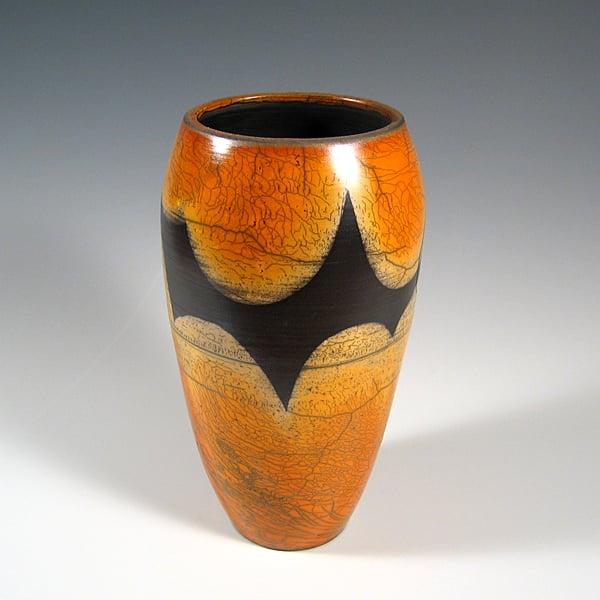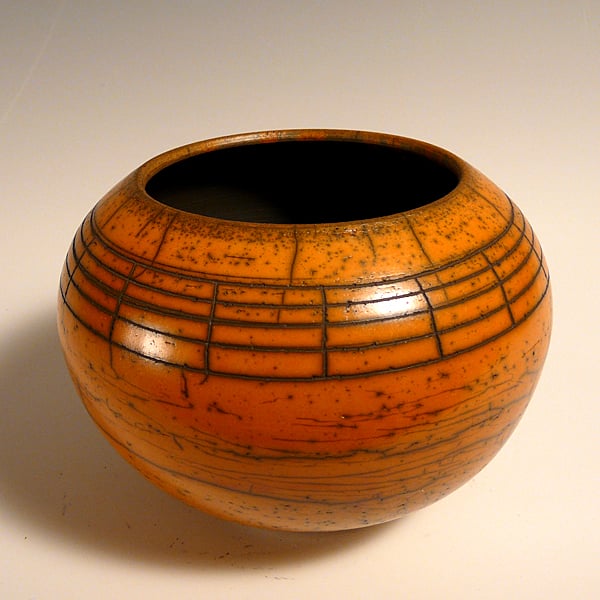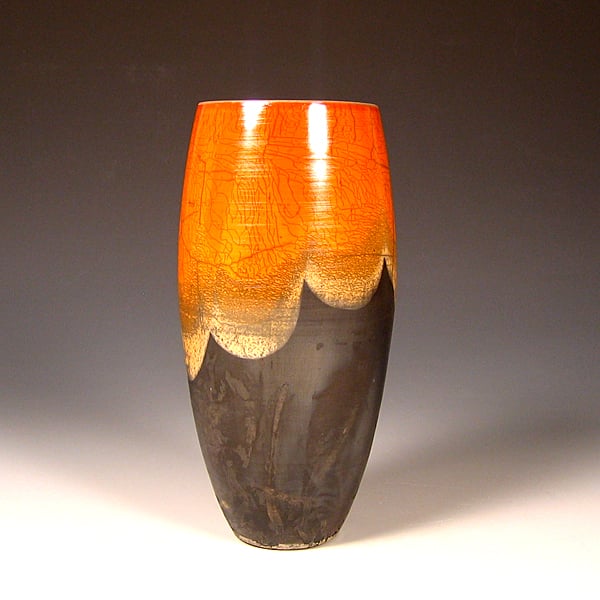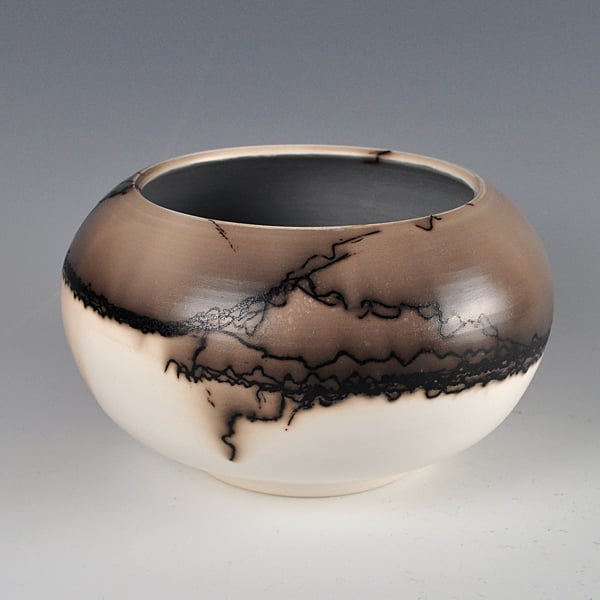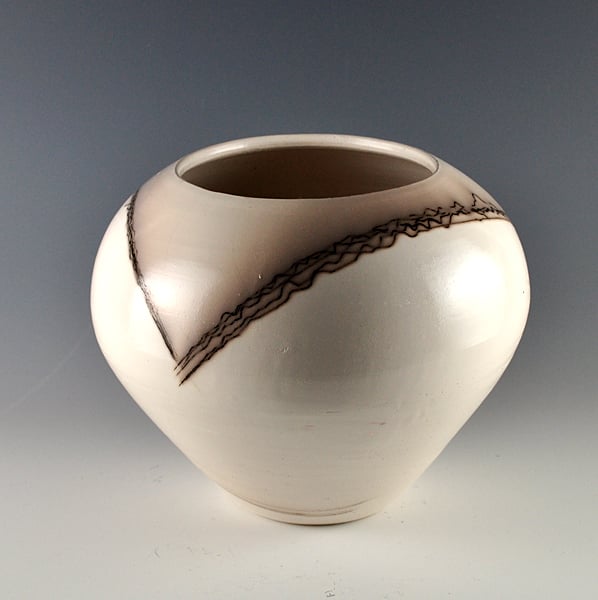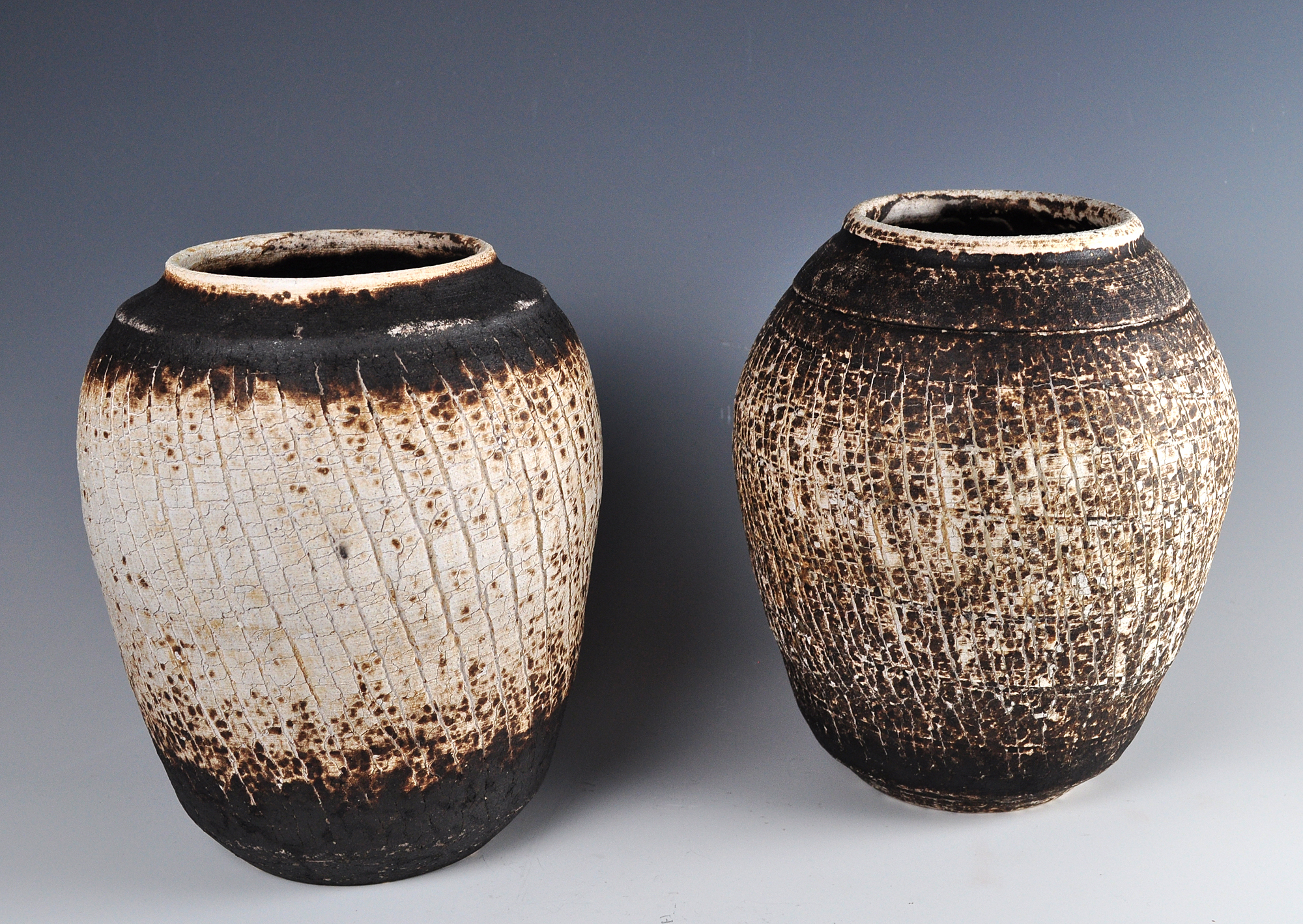Alternative Firing Methods
Terra Sigillata
Each piece is hand formed. When firm enough to handle, the surface is rubbed with a quartz stone to produce a smooth glossy surface. This step is called burnishing. Then terra sigillata is applied and allowed to dry. Each piece is then fired in the raku process.
Terra sigillata is a very smooth, lustrous coating of clay which resembles a glaze. The name means "sealed earth" and has been used to refer to the Classical Greek Attic black figure and red-figure painted pottery. My terra sigillata is made from clay dug in Cortona, Italy. Although each piece is fired to just over 1500° F, they should not be considered waterproof.
There are 4 galleries: Terra Sigillata, Horse Hair Raku, Obvara Raku and Naked Raku.
Click any image to view slideshow
Click any image to view slideshow
Horse Hair Raku
Each piece is hand formed. When firm enough to handle, the surface is rubbed with a quartz stone to produce a smooth glossy surface. This step is called burnishing.
After a bisque firing, the piece is heated to 1500° F in a raku kiln. Tongs are used to remove and hold the hot pot while strands of horse hair are placed to the surface, leaving random black lines and vapors of carbon. An iron salt solution is sometimes sprayed to add a richness to the surface. After cleaning and drying, a sealer is applied to the surface, which adds a sheen. Although each piece is fired to 1500° F, they should not be considered waterproof.
Click any image to view slideshow
Obvara Raku
A variation on the Raku process, no glaze is applied directly to the piece before firing. During creation the piece is stretched to create cracks in the clay. Rather than reducing with dry combustible material, a mixture of water, flour and yeast is prepared prior to firing and upon removing from the kiln, the piece is submerged in the mixture.
Although each piece is fired to over 1500° F, they should not be considered waterproof.
Click any image for slideshow
Naked Raku
A variation on the Raku process, no glaze is applied directly to the piece before firing. The clay is burnished when it is leather hard, and then bisque fired. A slip which is designed to shrink during drying is then thickly applied, followed by a very thin layer of clear glaze.
Each piece is fired which allows the melted glaze to hold the cracked slip slip to the pot. The piece is carefully removed from the hot kiln and placed in a container with combustible materials to smoke. Still hot, the pot is removed and sprayed with cold water which flakes off the layer of slip/glaze. During smoking carbon finds its way between the slip cracks and colors the surface.
After cleaning and drying, a sealer is applied to the surface of the naked clay, this adds a sheen. Although each piece is fired to over 1500° F, they should not be considered waterproof.



